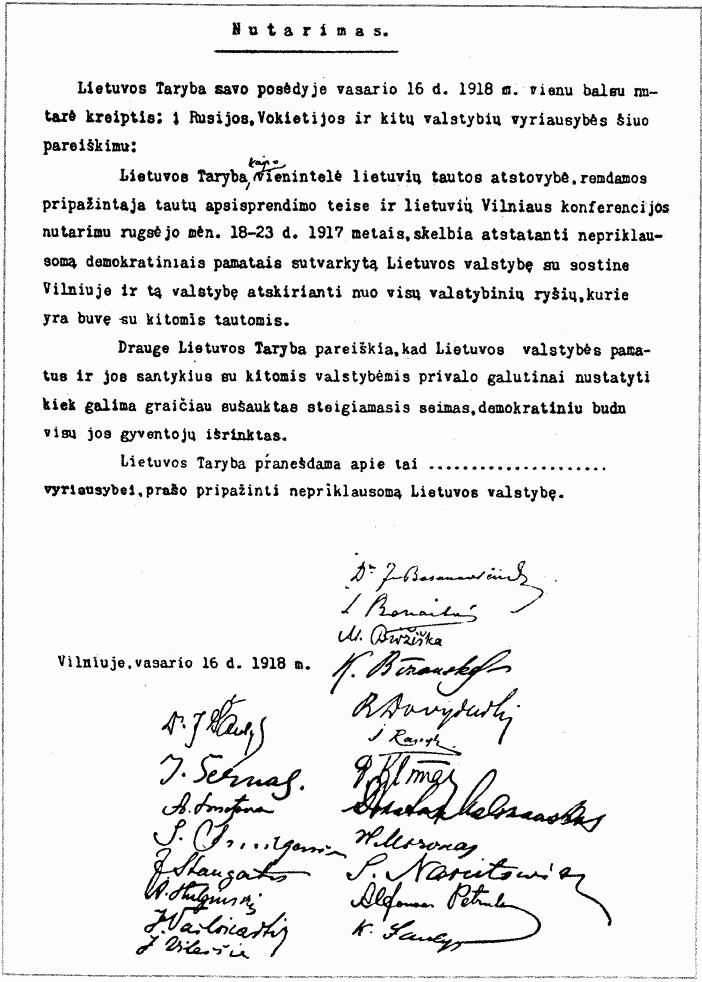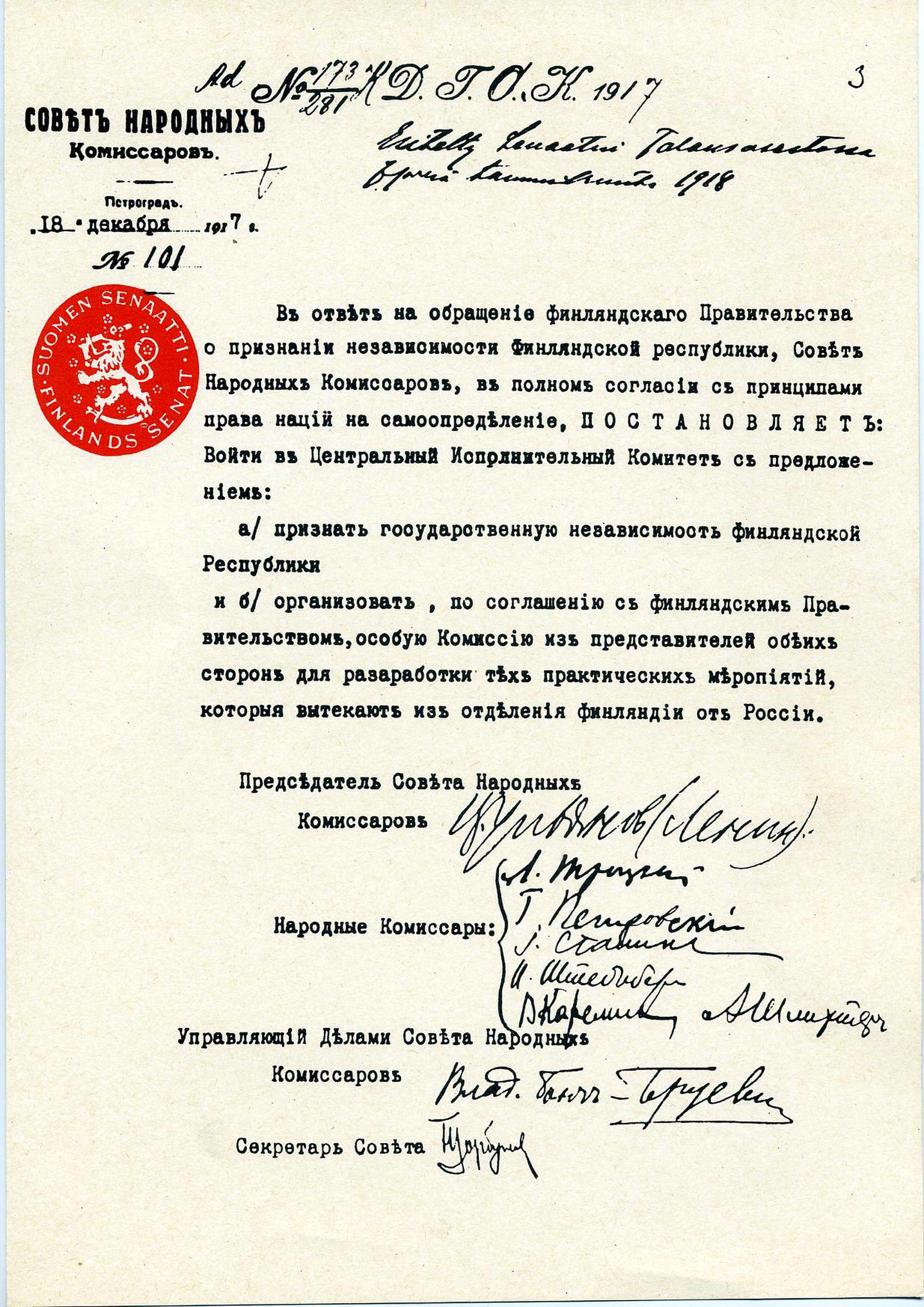|
1918
The ceasefire that effectively ended the World War I, First World War took place on the eleventh hour of the eleventh day of the eleventh month of this year. Also in this year, the Spanish flu pandemic killed 50–100 million people worldwide. In Russia, this year runs with only 352 days. As the result of Julian to Gregorian calendar switch, 13 days needed to be skipped. Wednesday, January 31 ''(Julian Calendar)'' was immediately followed by Thursday, February 14 ''(Gregorian Calendar)''. Events World War I will be abbreviated as "WWI" January * January – 1918 flu pandemic: The "Spanish flu" (influenza) is first observed in Haskell County, Kansas. * January 4 – The Finnish Declaration of Independence is recognized by Russian Soviet Federative Socialist Republic, Soviet Russia, Sweden, German Empire, Germany and France. * January 8 – American president Woodrow Wilson presents the Fourteen Points as a basis for peace negotiations to end the war. * January 9 ... [...More Info...] [...Related Items...] OR: [Wikipedia] [Google] [Baidu] |
Spanish Flu
The 1918–1920 flu pandemic, also known as the Great Influenza epidemic or by the common misnomer Spanish flu, was an exceptionally deadly global influenza pandemic caused by the H1N1 subtype of the influenza A virus. The earliest documented case was March 1918 in Kansas, United States, with further cases recorded in France, Germany and the United Kingdom in April. Two years later, nearly a third of the global population, or an estimated 500 million people, had been infected. Estimates of deaths range from 17 million to 50 million, and possibly as high as 100 million, making it the deadliest pandemic in history. The pandemic broke out near the end of World War I, when wartime censors in the belligerent countries suppressed bad news to maintain morale, but newspapers freely reported the outbreak in neutral Spain, creating a false impression of Spain as the epicenter and leading to the "Spanish flu" misnomer. Limited historical epidemiological data make the pandemic' ... [...More Info...] [...Related Items...] OR: [Wikipedia] [Google] [Baidu] |
1918 Flu Pandemic
The 1918–1920 flu pandemic, also known as the Great Influenza epidemic or by the common misnomer Spanish flu, was an exceptionally deadly global influenza pandemic caused by the Influenza A virus subtype H1N1, H1N1 subtype of the influenza A virus. The earliest documented case was March 1918 in Kansas, United States, with further cases recorded in French Third Republic, France, German Empire, Germany and the United Kingdom of Great Britain and Ireland, United Kingdom in April. Two years later, nearly a third of the global population, or an estimated 500 million people, had been infected. Estimates of deaths range from 17 million to 50 million, and possibly as high as 100 million, making it List of epidemics and pandemics, the deadliest pandemic in history. The pandemic broke out near the end of World War I, when wartime Censorship, censors in the belligerent countries suppressed bad news to maintain morale, but newspapers Freedom of the press, freely reported the outbreak ... [...More Info...] [...Related Items...] OR: [Wikipedia] [Google] [Baidu] |
World War I
World War I or the First World War (28 July 1914 – 11 November 1918), also known as the Great War, was a World war, global conflict between two coalitions: the Allies of World War I, Allies (or Entente) and the Central Powers. Fighting took place mainly in European theatre of World War I, Europe and the Middle Eastern theatre of World War I, Middle East, as well as in parts of African theatre of World War I, Africa and the Asian and Pacific theatre of World War I, Asia-Pacific, and in Europe was characterised by trench warfare; the widespread use of Artillery of World War I, artillery, machine guns, and Chemical weapons in World War I, chemical weapons (gas); and the introductions of Tanks in World War I, tanks and Aviation in World War I, aircraft. World War I was one of the List of wars by death toll, deadliest conflicts in history, resulting in an estimated World War I casualties, 10 million military dead and more than 20 million wounded, plus some 10 million civilian de ... [...More Info...] [...Related Items...] OR: [Wikipedia] [Google] [Baidu] |
German Empire
The German Empire (),; ; World Book, Inc. ''The World Book dictionary, Volume 1''. World Book, Inc., 2003. p. 572. States that Deutsches Reich translates as "German Realm" and was a former official name of Germany. also referred to as Imperial Germany, the Second Reich or simply Germany, was the period of the German Reich; . from the unification of Germany in 1871 until the German revolution of 1918–1919, November Revolution in 1918, when the German Reich changed its form of government from a monarchy to a Weimar Republic, republic. The German Empire consisted of States of the German Empire, 25 states, each with its own nobility: four constituent Monarchy, kingdoms, six Grand duchy, grand duchies, five Duchy, duchies (six before 1876), seven Principality, principalities, three Free imperial city, free Hanseatic League, Hanseatic City-state, cities, and Alsace–Lorraine, one imperial territory. While Prussia was one of four kingdoms in the realm, it contained about two-thirds ... [...More Info...] [...Related Items...] OR: [Wikipedia] [Google] [Baidu] |
Fourteen Points
The Fourteen Points was a statement of principles for peace that was to be used for peace negotiations in order to end World War I. The principles were outlined in a January 8, 1918 speech on war aims and peace terms to the United States Congress by President Woodrow Wilson. However, his main Allied colleagues ( Georges Clemenceau of France, David Lloyd George of the United Kingdom, and Vittorio Emanuele Orlando of Italy) were skeptical of the applicability of Wilsonian idealism. The United States had joined the Triple Entente in fighting the Central Powers on April 6, 1917. Its entry into the war had in part been due to Germany's resumption of submarine warfare against merchant ships trading with France and Britain and also the interception of the Zimmermann Telegram. However, Wilson wanted to avoid the United States' involvement in the long-standing European tensions between the great powers; if America was going to fight, he wanted to try to separate that participation in ... [...More Info...] [...Related Items...] OR: [Wikipedia] [Google] [Baidu] |
Russian Constituent Assembly
The All Russian Constituent Assembly () was a constituent assembly convened in Russia after the February Revolution of 1917. It met for 13 hours, from 4 p.m. to 5 a.m., , whereupon it was dissolved by the Bolshevik-led All-Russian Central Executive Committee,The Bolsheviks: the intellectual and political history of the triumph of communism in Russia : with a new preface. Adam Bruno Ulam. Harvard University Press. p. 397.The Rise and Fall of the Soviet Union. Richard Sakwa. p. 73Russia in War and Revolution: General William V. Judson's Accounts from Petrograd, 1917-1918. William Voorhees Judson. Kent State University Press. p. 229How the Soviet Union is Governed. Jerry F. Hough. p. 80 proclaiming the Third All-Russian Congress of Soviets the new governing body of Russia.Russia in the Twentieth Century: The Quest for Stability. David R. Marples. p. 38How the Soviet Union is Governed. Jerry F. Hough. p. 81The Life and Times of Soviet Socialism. Alex F. Dowlah, John E. Elliott. ... [...More Info...] [...Related Items...] OR: [Wikipedia] [Google] [Baidu] |
Red Army
The Workers' and Peasants' Red Army, often shortened to the Red Army, was the army and air force of the Russian Soviet Republic and, from 1922, the Soviet Union. The army was established in January 1918 by a decree of the Council of People's Commissars to oppose the military forces of the new nation's adversaries during the Russian Civil War, especially the various groups collectively known as the White Army. In February 1946, the Red Army (which embodied the main component of the Soviet Armed Forces alongside the Soviet Navy) was renamed the "Soviet Army". Following the dissolution of the Soviet Union it was split between the post-Soviet states, with its bulk becoming the Russian Ground Forces, commonly considered to be the successor of the Soviet Army. The Red Army provided the largest land warfare, ground force in the Allies of World War II, Allied victory in the European theatre of World War II, and its Soviet invasion of Manchuria, invasion of Manchuria assisted the un ... [...More Info...] [...Related Items...] OR: [Wikipedia] [Google] [Baidu] |
Finnish Declaration Of Independence
The Finnish Declaration of Independence (; ) was adopted by the Parliament of Finland on . It declared Finland to be independent from Russia, with reference to a bill (law), bill simultaneously delivered to the Parliament to make Finland an independent republic instead. Declaring independence was only part of the long process leading to the independence of Finland. The declaration is celebrated as Independence Day (Finland), Independence Day in Finland. History Revolution in Russia After the February Revolution and the abdication of Tsar Nicholas II of Russia, Nicholas II, Grand Duke of Finland, on 2 March (15 March New Style, N.S.) 1917, the personal union between Russia and Finland lost its legal base – at least according to the view in Helsinki. There were negotiations between the Russian Provisional Government and Finnish authorities. The resulting proposal, approved by the Provisional Government, was heavily rewritten in the ''Eduskunta'' (Finnish Parliament) a ... [...More Info...] [...Related Items...] OR: [Wikipedia] [Google] [Baidu] |
Russian Soviet Federative Socialist Republic
The Russian Soviet Federative Socialist Republic (Russian SFSR or RSFSR), previously known as the Russian Socialist Federative Soviet Republic and the Russian Soviet Republic, and unofficially as Soviet Russia,Declaration of Rights of the laboring and exploited people, article I. was a socialist state from 1917 to 1922, and afterwards the largest and most populous Republics of the Soviet Union, constituent republic of the Soviet Union (USSR) from 1922 to 1991, until becoming a Declaration of State Sovereignty of the Russian SFSR, sovereign part of the Soviet Union with priority of Russian laws over Union-level legislation in 1990 and 1991, the last two years of the existence of the USSR.The Free Dictionary Russian Soviet Federated Socialist Republic< ... [...More Info...] [...Related Items...] OR: [Wikipedia] [Google] [Baidu] |
Russian Democratic Federative Republic
The Russian Republic,. referred to as the Russian Democratic Federative Republic in the 1918 Constitution, was a short-lived state which controlled, '' de jure'', the territory of the former Russian Empire after its proclamation by the Russian Provisional Government on 1 September (14 September, ) 1917 in a decree signed by Alexander Kerensky as Minister-Chairman and Alexander Zarudny as Minister of Justice.The Russian Republic Proclaimed at prlib.ru, accessed 12 June 2017 The of the Russian Republic was dissolved after the |
Woodrow Wilson
Thomas Woodrow Wilson (December 28, 1856February 3, 1924) was the 28th president of the United States, serving from 1913 to 1921. He was the only History of the Democratic Party (United States), Democrat to serve as president during the Progressive Era when Republicans dominated the presidency and United States Congress, legislative branches. As president, Wilson changed the nation's economic policies and led the United States into World War I. He was the leading architect of the League of Nations, and his stance on foreign policy came to be known as Wilsonianism. Born in Staunton, Virginia, Wilson early life of Woodrow Wilson, grew up in the Southern United States during the American Civil War and Reconstruction era. After earning a Doctor of Philosophy, Ph.D. in history and political science from Johns Hopkins University, Wilson taught at several colleges prior to being appointed president of Princeton University, where he emerged as a prominent spokesman for progressivism ... [...More Info...] [...Related Items...] OR: [Wikipedia] [Google] [Baidu] |








